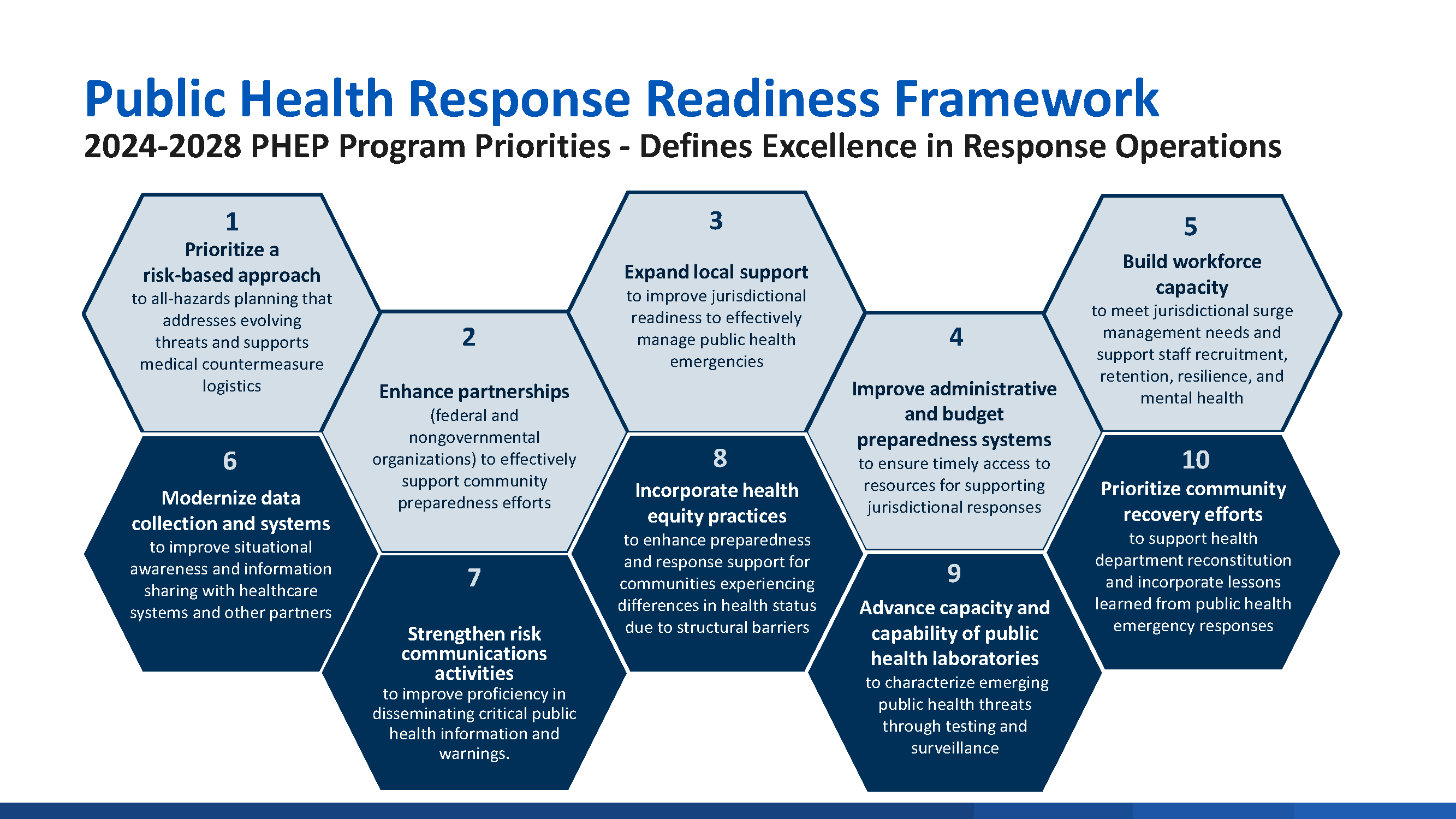Key points
- CDC's Public Health Response Readiness Framework guides CDC guidance and funding for health departments nationwide through the Public Health Emergency Preparedness (PHEP) cooperative agreement program.
Overview
CDC's Public Health new Response Readiness Framework focuses on 10 priority areas that are essential to our ability to prepare for, respond to, and recover from health threats. The Response Readiness Framework defines excellence in response, focusing on improvements in emergency response operations designed to improve response outcomes and provides a coordinated strategy for CDC, our preparedness partners, and our PHEP jurisdictions, to ensure we are all working together to reach common response goals.
Implementation strategies

Public Health Response Readiness Framework: 2024–2028 Program Priorities
Defines Excellence in Response Operations
- Prioritize a risk-based approach to all-hazards planning that addresses evolving threats and supports medical countermeasure logistics.
- Enhance partnerships (federal and non-governmental organizations) to effectively support community preparedness efforts.
- Expand local support to improve jurisdictional readiness to effectively manage public health emergencies.
- Improve administrative and budget preparedness systems to ensure timely access to resources for supporting jurisdictional responses.
- Build workforce capacity to meet jurisdictional surge management needs and support staff recruitment, retention, resilience, and metal health.
- Modernize data collection systems to improve situational awareness and information sharing with healthcare systems and other partners.
- Strengthen risk communications activities to improve proficiency in disseminating critical public health information and warnings.
- Incorporate health equity practices to enhance preparedness and response support for communities experiencing differences in health status due to structural barriers.
- Advance capacity and capability of public health laboratories to characterize emerging public health threats through testing and surveillance.
- Prioritize community recovery efforts to support health department reconstitution and incorporate lessons learned from public health emergency responses.
